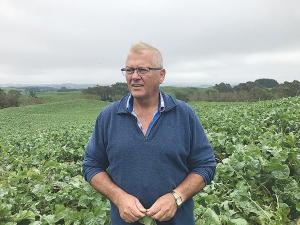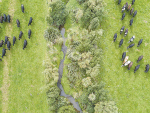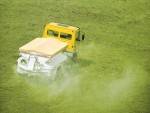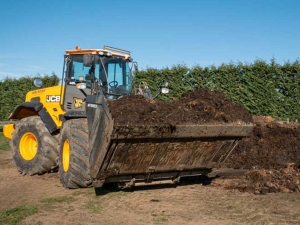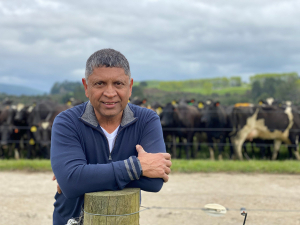Aerial application of herbicides, fertiliser and seeds could be the answer to preventing soil erosion.
‘No-till’ heli-cropping was successfully trialled recently on a pastoral farm in Waikato; the aim is to protect soils while maintaining productivity, says the Sustainable Helicropping Group chairman, Colin Armer.
“We are effectively putting away the plough,” he said. “The aerial no-till approach means we can establish crops and renew pastures without touching the ground or disturbing precious soil -- more like what happens in nature.”
Armer says early results from the $1 million project show potential to stem the 192 million tonnes of soil lost every year because of erosion (according to ‘Our Land 2018’, published by the Ministry for the Environment). Of these losses, 44% are from pastoral land.
He says the project to protect the soil brought together seven farmers to trial aerial no-till on their rolling hill-country properties in the central and lower North Island.
The technique involves precision use of herbicides, fertiliser and seeds applied by helicopter. While especially relevant on hill country, the practice is cost-effective on the full range of land contour types and when done correctly provides a valuable source of feed without the risk of erosion.
“We know aerial no-till works and we believe it’s a potential game-changer for any farmer wanting to grow crops and renew pasture profitably with minimal soil disturbance.
“This project was the next step because we can now capture learnings and develop a system proven profitable and sustainable across a wide range of farm and soil types – including showing where this approach is not suitable.”
The potential of aerial no-till is supported by Ballance Agri-Nutrients’ fertiliser and forage specialist Murray Lane, whose work with the trial is captured in a joint paper on the technique with Bruce Willoughby of Ecometric Consulting to the NZ Grasslands Association Conference.
Lane says aerial no-till is a far cry from the old “spray and pray” practices which had patchy results and were unlikely to achieve consistent environmental outcomes.
“Today we have GPS-supported precision placement tools available for fertiliser and seed placement, and sophisticated Accuflow nozzles to confidently spray without drift.
“The farmers involved have been achieving profitable returns and aerial no-till also helps them meet their obligations as environmental custodians. Their success comes from strictly following a prescribed process that reduces risks to a profitable return and to soil conservation. There are no shortcuts.”
Project manager Ian Tarbotton says the priority is to figure out what constitutes best practice in both the establishment and grazing phases of the crop so that the prescribed process achieves results that are environmentally sustainable and profitable.
“We will be looking at grazing intensity, plant species and the role of soil bunds, vegetative buffer strips and catch crops to minimise the risk of soil loss. We have a lot of interest from regional councils who can see the environmental benefits of getting this right.
“For example, Bay of Plenty Regional Council is interested in how forage crops and pasture can be established on the rolling country around Lake Rotorua without the usual cultivation and with minimal soil and nutrient losses.”
Tarbotton says extension — important to this project — will be by field visits, a website, hands-on and virtual tools and a research paper and a farmer handbook. There is existing knowledge to harness, but new science is needed on measuring the effectiveness of buffers and mitigations.
Armer says the long-term goal is “more profitable and resilient farms, especially rolling and hill country farms, the retention of soil, improved soil condition and matching grazing approaches to forage type and location”.
The project is paid for by the Government’s Sustainable Farming Fund and has backers in various sectors in the North and South Island.





